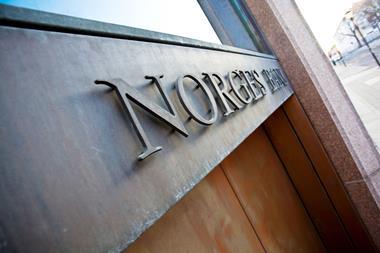NORWAY - The ministry of finance in Norway proposes to reduce active management for the country's giant NOK2.76trn (€342bn) Government Pension Fund Global.
This proposal is part of a report on new regulations for risk and active management for the fund, presented by the ministry to Stortinget, the country's parliament, today.
The finance ministry proposes a reduction in expected tracking error, a key change in the scope for active management. It wants to reduce its upper limit of 1.5 percentage points to 1 percentage point, but with room for deviations in exceptional circumstances.
Sigbjørn Johnsen, minister of finance said in a statement: "In our opinion there still ought to be some leeway for the fund to deviate from its benchmark portfolio. The costs involved in closely replicating the benchmark portfolio are unnecessarily high. Moreover, the fund's characteristics create a potential for excess returns that should be exploited to some extent. Finally, there are synergies between active management and other parts of the investment management process."
In addition, the proposals also want to enhance alternative measures to limit risk such as limits to leverage and requirements on concentration risk and absolute overlap between the actual and the benchmark portfolio.
The proposals are based on an evaluation process which was based on expert advice from academic and professional parts of the international finance community, and advice from Norges Bank, the Central Bank, itself.
It is expected that the debate on active management and benchmarks will continue, and in next year's report to the Norwegian Parliament the ministry will return to the question of whether the fund's benchmark portfolio ought to include exposure to systematic risk factors beyond market risk. In an online question and answer session, Johnsen said the ministry of fnance will consider the effects of changing the benchmark next year.
The academic proposal in January suggested that the fund create custom-made, completely liquid benchmarks onto which it would impose factor tilts, thereby capturing exposure to an array of systematic risk factors.
A key strength to these benchmarks would be that the ministry of finance would set the type and size of exposure to each factor, much like an asset allocation. Plus, the factors would be rebalanced similarly to how many pension funds rebalance within asset allocation limits. Instead of holding an optimal allocation of assets, the fund would hold an optimal allocation of risks.
A similar strategy is used by ATP in Denmark, for instance, and has been a success story. ATP also reports returns in real assets, making it simple for people to see how much money is gained in a specific time period.
Apart from changes to risk and active management, the report also said the fund had fared well through the financial crisis, and Johnson said the key is a strong adherence to the long-term investment strategy of the fund.
Recently, a 5% allocation to real estate investments was added to the fund's portfolio mix. NOK130bn (€16.1bn) will be invested over several years both because of the size of the fund and risks associated with the volatility of the property sector. The 2011 report will also deal with issues of adding other asset classes into the portfolio, Johnsen said in the online Q&A
The fund returned a record 25.6% in 2009 and total market value rose to NOK2.76trn. (See earlier IPE article: Norway-Global pension fund delivers record returns)
"The financial crisis had a significant impact on the Government Pension Fund. However, the losses from 2008 were to a large extent recovered in 2009, faster than many had expected. We have seen how volatile financial markets can be, but this is volatility we can live with, because the fund does not have specific liabilities requiring it to sell assets when prices are low. An alternative investment strategy aiming to minimise return variability would imply significantly lower expected returns", Johnsen noted.












No comments yet